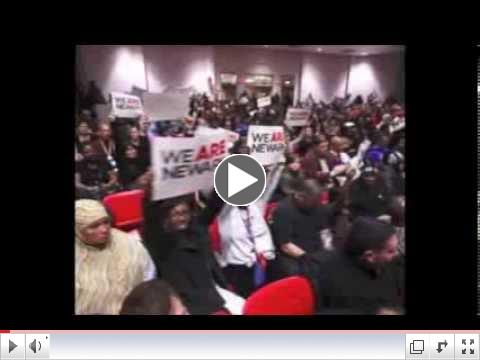 | |
RAS UP! RAS UP! TAKE BACK YOUR CITY: A compiled video depicting Black and Hispanic Unity in the city of Newark. The Music is performed by Keyanna Celina.
|
|
 | |
Journal of the Black Left Unity Network
|
|

New CCDS Book Reporting on Vietnam
|
 The new annual edition of our journal of discussion and analysis is now out. More than 130 pages, it includes 20 articles on organizing, racism and the right. Cost is $10 plus shipping. Or get one by becoming a sustainer. Click the title to buy it directly. The new annual edition of our journal of discussion and analysis is now out. More than 130 pages, it includes 20 articles on organizing, racism and the right. Cost is $10 plus shipping. Or get one by becoming a sustainer. Click the title to buy it directly.
|
|
Radical Jesus:
A Graphic History of Faith 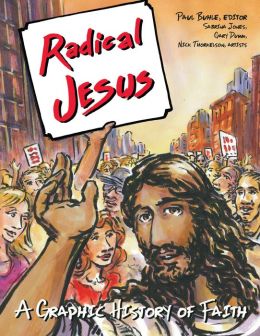 By Paul BuhleHerald Press By Paul BuhleHerald Press
|

Want to Know what CCDS has
been doing...Check it Out!
|
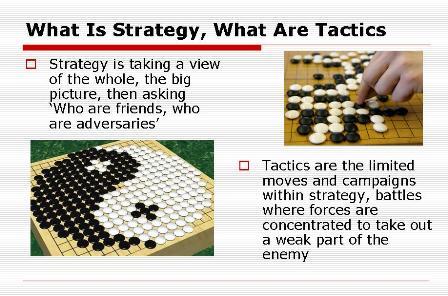 Keep On Keepin' On Keep On Keepin' OnWhy Socialists Run in Elections, Strategy and Tactics Slide Slow, Class and Privilege, the Green New Deal ...and other Short Posts on Tumblr by Carl Davidson
|

Edited by Carl Davidson Revolutionary Youth the the New Working Class: The Praxis Papers, the Port Authority Statement, the RYM Documents and other Lost Writings of SDS
Changemaker, 273pp, $22.50
For the full contents, click the link and view 'Preview' under the cover graphic.
|
|
By Randy Shannon, CCDS

"Everyone has the right to work, to free of employment, to just and favorable conditions of work and to protection against unemployment."
- United Nations Universal Declaration of Human Rights, December 10, 1948
I. Introduction
The "Great Recession" that began in 2007 has caused the greatest percent of job losses since the Great Depression of 1929. This crisis is the end of an era of unrestrained 'neo-liberal' capitalism that became public policy during the Reagan administration. The crisis marks a new level of instability with the growth of a global financial elite that targeted US workers and our trade unions after World War II.
|
|
Order Our
Full Employment Booklets
 |
...In a new and updated 2nd Edition
Capitalism may well collapse under its own excesses, but what would one propose to replace it? Margaret Thatcher's mantra was TINA...There Is No Alternative. David Schweickart's vision of "Economic Democracy" proposes a serious alternative. Even more fundamentally, it opens the door to thinking about alternatives. His may or may not turn out to be the definitive "successor system," but he is a leader in breaking out of the box. |
 by Paul KrehbielAutumn Leaf Press, $25.64
by Paul KrehbielAutumn Leaf Press, $25.64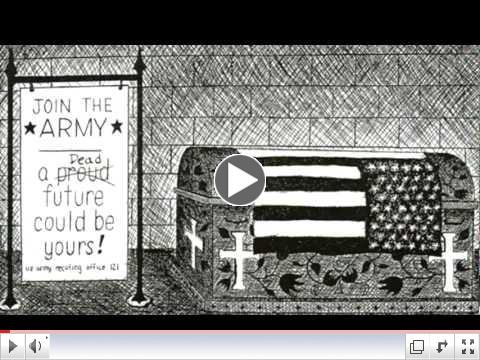 | | Shades of Justice Video: Bringing Down a President, Ending a War |
|
 By Giuseppe Fiori
Verso, 30 pages
|

Essays on Mondragon, Marx, Gramsci
and the Green and Solidarity Economies |
Solidarity Economy:What It's All About

Edited by Jenna Allard, Carl Davidson and Julie Matthaei
Buy it here...
|
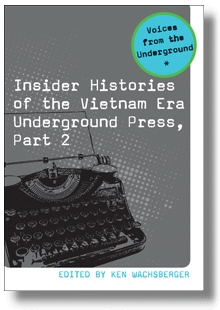
- Foreword by Susan Brownmiller
- Preface by Ken Wachsberger
$37.50 + $6 shipping
|
|
Discussion Documents for a Militant Movement
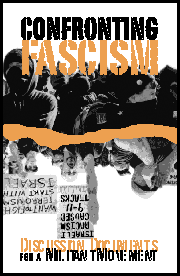
By Don Hamerquist
|
|
|
|
An Invitation to CCDSers and Friends...
 A Long March: From Raising
Wages to a New
Order at Work
We're the Committees of Correspondence for Democracy and Socialism...Do you have friends who should see this? Pass it on...Do you have a blog of your own? Others you love to read every day? Well, this is a place where you can share access to them with the rest of your comrades. Just pick your greatest hits for the week and send them to us at carld717@gmail.com! Most of all, it's urgent that you oppose war on Iran, defend voter rights, plan for 2014 races now, oppose austerity, support the 'Moral Mondays' in North Carolina, the Congressional Progressive Caucus' 'Back to Work Budget'! We're doing more than ever, and have big plans. So pay your dues, make a donation and become a sustainer. Do it Now! Check the link at the bottom...
|
Labor Shifts Its Strategy Leftward

AFL-CIO To Put 'Laser Focus' On Raising Wages By David Moberg
In These Times
The labor movement has a new driving message for its legislative, educational and political work that should resonate with most American workers, especially those who have the least: Your pay is too damn low!
AFL-CIO president Richard Trumka put it less colloquially this week than the New York gubernatorial candidate who once ran on a single message: "Rent is too damn high." Organized labor will put "a laser focus on raising wages," Trumka told reporters in Houston at the start of the winter quarterly meeting of the federation's executive council.
Whatever the words, the case for action is strong. Wages have stagnated for all but the rich for more than a decade and fallen for low-wage workers, according to the Economic Policy Institute, a leading research institution on labor markets. Adjusting for inflation over the past four years, hourly wages for workers in the bottom 30 percent have fallen an average of 68 cents an hour.
Those trends, mirrored by the top 1 percent capturing 95 percent of all the new income growth following the end of the Great Recession, explain why inequality is growing, according to University of California, Berkeley economist Emmanuel Saez.
However, as Trumka notes, the general public, as well as leaders from "the Pope to the president," have begun to express outrage over inequality. A minimum-wage boost has been increasingly on the U.S. agenda, with a $10.10 federal minimum proposed by Congressional Democrats and supported by Obama. Although the AFL-CIO is promoting the $10.10 minimum, Trumka says he favors a "living wage" standard set around $17 an hour, indexed to inflation.
"Wages are about what connects us all," he told reporters, suggesting that labor's campaign for a raise for all workers could bring old and new allies together in a powerful movement for economic fairness....(Click title for more)
|
|
Democratic Enterprise Structure Is Key
to the Shape of a Post-Capitalist Future

Workers at Vio.Me, a Greek factory without Bosses
Truthout Interview with Richard Wolff
By Leslie Thatcher
Truthout
Feb 26, 2014 - Richard Wolff talks about "The Shape of a Post-Capitalist Future," his entry in the new anthology 'Imagine: Living in a Socialist USA,' and his conviction that making the transition from capitalism to socialism requires a deliberate critique of capitalist workplace organization.
Leslie Thatcher for Truthout: What motivated you to choose (of all things!) "corporate structure" in your search for a "powerful, attractive and credible vision of socialism?"
 Richard Wolff: Richard Wolff: Chiefly because the internal organization of our workplaces has been so badly undervalued and thus so little transformed in and by socialist practices. This was true not only in the efforts to establish actual socialism but likewise in the theoretical and political projects for transition from capitalism to socialism. Human beings spend most of their adult lives - the central parts of most days of most weeks - at work. How their work structures their interactions with other people (their interdependencies, interactions, freedoms and responsibilities) are crucial to everything from daily personal life to politics, culture ... everything. Socialists have focused on changing ownership of means of production - from private to social - and on changing the mechanism of distributing resources and products - from market to planning. Those foci meant that the internal organization of workplaces was neglected and/or treated as a secondary matter of what technology and efficiency require, something largely independent of the transition from capitalism to socialism.
I am convinced that to make the transition from capitalism to socialism requires a deliberate critique of how capitalism organizes its workplaces. It likewise requires a deliberate specification of how and why socialism organizes its workplaces very differently.
To drive the point home, let me add two further and closely interrelated considerations. First, most of the "actually existing" socialist experiments to date unraveled in part because they never transformed the organization of their workplaces. They more or less replaced private shareholders and boards of directors with state officials and they more or less substituted planned distributions of inputs and outputs for market exchanges. What they did not do was to radically alter the internal organization of workplaces in a specifically socialist way.
Second, by a "specifically socialist way" I mean pretty much what Marx specified in Capital. Marx stressed there that a central dimension of capitalism that he wished to see transformed was "exploitation." By that he meant the capitalist organization of the workplace. In that organization workers add more value by their labor than the value paid to them (wages, salaries) for that labor. Capitalists appropriate that "more," or what Marx called "surplus." To squeeze as much surplus from the workers as possible, capitalists control and make all the key decisions: what, how and where to produce and what to do with the surpluses they appropriate from the workers.
A transition to socialism would thus require the transformation of capitalism's exploitative internal organization of enterprises. In other words, the transition to socialism requires that workers not only produce surpluses, but also themselves appropriate and distribute them. Workplaces stop being conflict-ridden confrontations of two different groups of people - employers and employees - and become instead cooperatives in which the same people who produce the surpluses also - collectively and democratically - appropriate those surpluses. Workplaces are reorganized into workers self-directed enterprises (WSDEs). In WSDEs, workers (rather than capitalists) decide what, how and where to produce and what to do with the surpluses their labor generates.
Imagine a socialism for the 21st century that included among its central goals the democratic transformation of the workplace, a dramatic advance beyond the major 19th and 20th century versions of socialism.
In other writings and presentations you've indicated you are altogether aware that all dominant CEOs after their initial selections, pick their own board for loyalty and for their identification with the CEO's interests, yet you present a very idealized picture of actually-existing corporate structure in "The Shape of a Post-capitalist Future." Why?
Because I wanted to ground a basic critique of the corporate organization of production - the dominant form of capitalist enterprise in the world today - by focusing on its paradigm form, its textbook formulation without the many deformations and biases that shape its particular incarnations. I wanted to show the profound problems, weaknesses and flaws in its best form before examining the additional defects it often displays, such as the one you chose as illustration.
Indeed, it is often the basic corporate organization of the enterprise that positions and enables a CEO, for example, to produce such additional defects. In my view, what you call the idealized capitalist enterprise organization is already fundamentally anti-democratic in how it determines (1) who produces the net-revenues versus who disposes of those net revenues and (2) who does the work versus who decides what products will be produced with what technology and where. The actual specifics of many capitalist corporations are only that much more vulnerable to the basic critique....(Click title for more)
|

In the rush to privatize the country's schools, corporations and politicians have decimated school budgets, replaced teaching with standardized testing, and placed the blame on teachers and students.
By Dean Paton
Yes! Magazine
Feb 21, 2014 - Until about 1980, America's public schoolteachers were iconic everyday heroes painted with a kind of Norman Rockwell patina-generally respected because they helped most kids learn to read, write and successfully join society. Such teachers made possible at least the idea of a vibrant democracy.
Since then, what a turnaround: We're now told, relentlessly, that bad-apple schoolteachers have wrecked K-12 education; that their unions keep legions of incompetent educators in classrooms; that part of the solution is more private charter schools; and that teachers as well as entire schools lack accountability, which can best be remedied by more and more standardized "bubble" tests.
What led to such an ignoble fall for teachers and schools? Did public education really become so irreversibly terrible in three decades? Is there so little that's redeemable in today's schoolhouses?

The Beginning of 'Reform'
To truly understand how we came to believe our educational system is broken, we need a history lesson. Rewind to 1980-when Milton Friedman, the high priest of laissez-faire economics, partnered with PBS to produce a ten-part television series called Free to Choose. He devoted one episode to the idea of school vouchers, a plan to allow families what amounted to publicly funded scholarships so their children could leave the public schools and attend private ones.
You could make a strong argument that the current campaign against public schools started with that single TV episode. To make the case for vouchers, free-market conservatives, corporate strategists, and opportunistic politicians looked for any way to build a myth that public schools were failing, that teachers (and of course their unions) were at fault, and that the cure was vouchers and privatization.
Jonathan Kozol, the author and tireless advocate for public schools, called vouchers the "single worst, most dangerous idea to have entered education discourse in my adult life."
Armed with Friedman's ideas, President Reagan began calling for vouchers. In 1983, his National Commission on Excellence in Education issued "A Nation At Risk," a report that declared, "the educational foundations of our society are presently being eroded by a rising tide of mediocrity that threatens our very future as a Nation and a people."
It also said, "If an unfriendly foreign power had attempted to impose on America the mediocre educational performance that exists today, we might well have viewed it as an act of war."
For a document that's had such lasting impact, "A Nation At Risk" is remarkably free of facts and solid data. Not so the Sandia Report, a little-known follow-up study commissioned by Admiral James Watkins, Reagan's secretary of energy; it discovered that the falling test scores which caused such an uproar were really a matter of an expansion in the number of students taking the tests. In truth, standardized-test scores were going up for every economic and ethnic segment of students-it's just that, as more and more students began taking these tests over the 20-year period of the study, this more representative sample of America's youth better reflected the true national average. It wasn't a teacher problem. It was a statistical misread.
The government never officially released the Sandia Report. It languished in peer-review purgatory until the Journal of Educational Research published it in 1993. Despite its hyperbole (or perhaps because of it), "A Nation At Risk" became a timely cudgel for the larger privatization movement. With Reagan and Friedman, the Nobel-Prize-winning economist, preaching that salvation would come once most government services were turned over to private entrepreneurs, the privatizers began proselytizing to get government out of everything from the post office to the public schools.
Corporations recognized privatization as a euphemism for profits. "Our schools are failing" became the slogan for those who wanted public-treasury vouchers to move money into private schools. These cries continue today.
The Era of Accountability
In 2001, less than a year into the presidency of George W. Bush, the federal government enacted sweeping legislation called "No Child Left Behind." Supporters described it as a new era of accountability-based on standardized testing. The act tied federal funding for public schools to student scores on standardized tests. It also guaranteed millions in profits to corporations such as Pearson PLC, the curriculum and testing juggernaut, which made more than $1 billion in 2012 selling textbooks and bubble tests.
In 2008, the economy collapsed. State budgets were eviscerated. Schools were desperate for funding. In 2009, President Obama and his Education Secretary, Arne Duncan, created a program they called "Race to the Top."
It didn't replace No Child Left Behind; it did step in with grants to individual states for their public schools. Obama and Duncan put desperate states in competition with each other. Who got the money was determined by several factors, including which states did the best job of improving the performance of failing schools-which, in practice, frequently means replacing public schools with for-profit charter schools-and by a measure of school success based on students' standardized-test scores that allegedly measured "progress."
Since 2001 and 'No Child Left Behind,' the focus of education policy makers and corporate-funded reformers has been to insist on more testing-more ways to quantify and measure the kind of education our children are getting, as well as more ways to purportedly quantify and measure the effectiveness of teachers and schools.
For a dozen or so years, this "accountability movement" was pretty much the only game in town. It used questionable, even draconian, interpretations of standardized-test results to brand schools as failures, close them, and replace them with for-profit charter schools....(Click title for more)
|
|
Bye-bye First Amendment rights, Michigan GOP and Tea Party reps pass a law requiring judges to fine citizens up to $1k per day, for picketing an employer. Image: Kheel Center
By Randa Morris
Progressive America Rising via addictinginfo.org
Feb 26, 2014 - This week, the Michigan House of Representatives took up HB 4643, legislation which was introduced by Republican Tom McMillin, that imposes massive fines against citizens who exercise their basic first amendment rights.
Under this law, citizens can be fined up to $1,000 per day for picketing.
Michigan's extreme right wing Governor, Rick Snyder, along with the state's predominately GOP/tea party legislature, have passed some of the most controversial laws in the country. From the state's insane Emergency Manager law, which grants the governor power to remove any elected official and replace that official with a hand picked lackey of the governor himself, to the much hated Right To Work legislation that was passed by the legislature only after the voters were locked out of the capital, to the state's extreme anti-abortion legislation and it's widely condemned 'rape insurance' bill, the fanatical right wing politicians that have seized hold of Michigan have made it all too clear that what the voters want is of no consequence to them.
As if all of that were not enough, however, this week the Michigan House of Representatives took up a bill that will require judges to impose a fine of up to $1,000 a day for picketing workers. An additional fine of up to $10,000 a day is also to be levied against any labor organization found to be leading or organizing a strike.
Not only is this law a direct attack on labor, but a direct attack on rights guaranteed to all citizens under the First Amendment of the United States Constitution.
Here's a video from the House Floor. Representative Jim Towsend (D) introduced three amendments to the proposed house bill, in order to protect citizen's constitutionally guaranteed right to peaceful assembly. At the end of the video the Speaker of the House can be heard to say "Amendments not adopted."
Are Michigan workers making too much money?
What's up with all of these anti-worker bills in Michigan? Why would the state's representatives be launching attacks against workers? Are Michigan's super high wages keeping employers from opening businesses in the state? Not hardly. In fact, Michigan workers are not earning anything close to super high wages....(Click title for more)
|
Chokwe Lumumba's Revolutionary Legacy
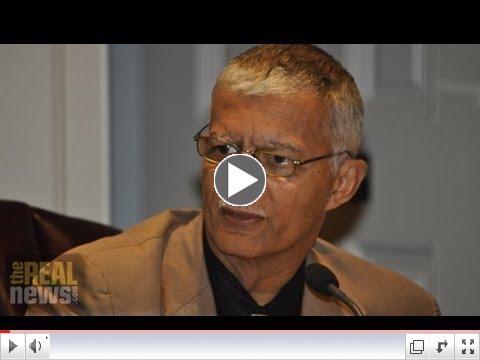 | |
Chokwe Lumumba, Dead at 66, Presente!
|
|
Ukraine Beyond Politics: Who Was Who
in Kiev's Independence Square?

The Ukraine parliament has promised elections, after the president was swept away in a brief burst of revolution in Kiev. Can the former opposition, including the far right, unite to form a viable future government? By Emmanuel Dreyfus
Le Monde Diplomatique
Now that Viktor Yanukovych has gone, and new elections are promised, we need to assess the political and popular forces that succeeded in overturning Ukraine's political system.
Who were the protesters and what were their goals? At the barricades in central Kiev there were Ukrainian and EU flags, as well as portraits of the poet Taras Shevchenko (1814-1861), considered as a spiritual father of Ukrainian identity, and of Stepan Bandera (1909-1959) who was, depending on your point of view, either a great patriot or a Nazi collaborator. And there were pictures of five Ukrainian activists, treated as martyrs after they were killed during the clashes in Grushevsky Street.
Maidan Nezalezhnosti, Kiev's Independence Square, the epicentre of the protests that had been taking place across Ukraine for three months, was filled with tents pitched by sympathisers from every part of the country: from Lviv, Ternopil and Ivano-Frankivsk, the strongholds of nationalism, but also from Lugansk and Donetsk, the big cities of the industrial east, which have always felt close to Russia. Cossacks wore their traditional costume. Women brought black bread and ham to the men standing guard. There was a pervasive smell of tea, cabbage soup and wood fires. During the week, the few thousand activists went about their day-to-day business; on Sundays, tens of thousands came to hear speeches by opposition leaders, pray and sing the national anthem, tirelessly.
The protest movement emerged in November last year, after Yanukovych suspended negotiations on a free trade agreement with the European Union (1). Independence Square was gradually transformed. The first to arrive were a few thousand pro-European partisans, but as repression began the square became a symbol of revolt against a corrupt and mercenary political system for many others - initially a revolt against the Yanukovych system, but also a rejection of the opposition parties, out of their depth in this crisis.
The involvement of several nationalist groups - a small but highly visible presence - and of ultra-radical, non-democratic movements without European sympathies has produced different reactions. Their presence was used actively by Russia, and to some extent by Yanukovych's government, to discredit the movement. But it also raised fears of a possible takeover of Independence Square by the far right - even though a popular movement was behind the protests and any attempt to categorise it in political terms would be an over-simplification.
Far right's inspiration
The far right is largely modelled on the nationalist movement that developed from the 1920s, when most of what is now Ukraine was divided between Poland and Soviet Russia. From the start it was shaped by a variety of influences: Italian fascism, the partial collaboration - for pragmatic or ideological reasons - of some of its representatives (such as Bandera) with Nazi Germany, the participation of several Ukrainian battalions in the massacre of Jewish and Polish civilians during the second world war.
Political scientist Andreas Umland, who teaches at the National University of Kyiv-Mohyla Academy, said: "There are no objective historical accounts of Bandera's [career]. Russian historians portray him as a fascist ally of the Nazis, while Ukrainian historians praise him without reserve. His admirers on Independence Square take a naïve and biased view of him, which is a problem. But it seems equally biased and dishonest to call him a fascist, as the Russians do" (2).
Dormant during the Soviet era, the nationalist movement reappeared after independence in 1991, when the Social-National Party of Ukraine (SNPU) was formed. Until the early 2000s, the SNPU was a marginal, xenophobic and ultra-nationalist organisation, and what little support it had was largely in the west of the country. Its leader, Oleh Tyahnybok, was elected to the Ukrainian parliament for the first time in 1998.
During the 2000s, the SNPU changed significantly. It shed its fascist trappings at its 6th congress in 2004, renaming itself Svoboda (freedom) and abandoning its neo-Nazi badge, the Wolfsangel (wolf hook), in favour of a more neutral symbol. According to Oleksiy Leshchenko of the Gorshenin Institute thinktank, these cosmetic changes "were intended mainly to reassure voters, but were also meant to improve Svoboda's image abroad."
In search of respectability, Svoboda established relations with other European far-right parties. Jean-Marie Le Pen, president of France's Front National, attended the 2004 congress as guest of honour. Svoboda also moderated its nationalist stance and references to Bandera - about whom Ukrainians do not agree - and gradually adopted a more general discourse, relatively common among the European far right, based on radical and vehement criticism of "the system"....(Click title for more)
|
"Creo que la mano, la mano invisible de los Estados Unidos, está involucrado en la crisis venezolana. El presidente Obama debe indicar en palabras claras de que Estados Unidos se opone a cualquier intento de un golpe de Estado y los Estados Unidos no va a apoyar directa oindirectamente. Las fuerzas anti-Maduro están actuando para desestabilizar y finalmente derrocar al gobierno de Maduro, que nunca ha sido vencer en las urnas. Los Estados Unidos no debe fomentar este proceso por medio de palabras o acciones, a la intemperie o en secreto." - Tom Hayden, on Telesur, February 25, 2014.
By Tom Hayden
Beaver County Peace Links
It's difficult to grasp the facts behind the murky fog of Venezuelan crisis. Based more or less on intuitions, but also credible documents, some blame most of the crisis on the CIA. Some national security types, abhorring populism, claim that the Venezuela state is consolidating dictatorial power precisely by winning so many elections! Others, while friendly to Venezuela, blame the Caracas government for failing to address the problems of violent crime and economic malaise.
President Barack Obama may or may not know what various US operatives are doing. We have seen evidence of a "state within the state" before, going back as far as the CIA's operations against Cuba. In Obama's time, the president correctly named the 2009 coup in Honduras a "coup", and then seemed powerless to prevent it. At his first Summit of the Americas, a friendly Obama shook the hand of Hugo Chavez before Obama's top adviser tried to sabotage the warming of relations.
Call me naive, but I do not believe President Obama wants to see President Maduro overthrown. Chaos would follow. The US would be blamed. Relations with Latin America would freeze below zero. The president probably thinks Maduro should thrash in his own domestic contradictions.
But there's another US "government", a secret network that works tirelessly to undermine any Latin American threat to the dominance of American capital and military power. They understand that the president must be provided with "plausible deniability", and so they keep Obama out of the loop. Sometimes they operate through the CIA, sometimes under Republican-Democratic "democracy promotion" programs, sometimes through third parties such as the Florida-based FTI Consulting. Democratic Party political consultants and pollsters have worked for Venezuela's opposition. It's difficult even for a president to keep a grip on it all. And that being the case, transparency disappears for the US Congress and public.
Obama's public statements this week certainly gave moral support to the street demonstrations. While also including a vague call for "dialogue", Obama is playing with fire. Obama immediately needs to rein in the entire entourage of US-supported agents of destabilization and issue them a clear cease-and-desist order, or he and the US government will be blamed for what may happen in the weeks ahead. He needs request and support whatever consensus emerges this week from the region's elected governments and the United Nations....(Click title for more)
|

An Essay Confirming Our Ongoing Need for Both Marx and Gramsci to Spotlight, Dissect and Break Apart Our Adversaries
By Mike Lofgren
Billmoyers.com
Rome lived upon its principal till ruin stared it in the face. Industry is the only true source of wealth, and there was no industry in Rome. By day the Ostia road was crowded with carts and muleteers, carrying to the great city the silks and spices of the East, the marble of Asia Minor, the timber of the Atlas, the grain of Africa and Egypt; and the carts brought out nothing but loads of dung. That was their return cargo.
- The Martyrdom of Man by Winwood Reade (1871)
Feb 21, 2014 - There is the visible government situated around the Mall in Washington, and then there is another, more shadowy, more indefinable government that is not explained in Civics 101 or observable to tourists at the White House or the Capitol. The former is traditional Washington partisan politics: the tip of the iceberg that a public watching C-SPAN sees daily and which is theoretically controllable via elections. The subsurface part of the iceberg I shall call the Deep State, which operates according to its own compass heading regardless of who is formally in power. [1]
During the last five years, the news media has been flooded with pundits decrying the broken politics of Washington. The conventional wisdom has it that partisan gridlock and dysfunction have become the new normal. That is certainly the case, and I have been among the harshest critics of this development. But it is also imperative to acknowledge the limits of this critique as it applies to the American governmental system. On one level, the critique is self-evident: In the domain that the public can see, Congress is hopelessly deadlocked in the worst manner since the 1850s, the violently rancorous decade preceding the Civil War.
Yes, there is another government concealed behind the one that is visible at either end of Pennsylvania Avenue, a hybrid entity of public and private institutions ruling the country...
As I wrote in The Party is Over, the present objective of congressional Republicans is to render the executive branch powerless, at least until a Republican president is elected (a goal that voter suppression laws in GOP-controlled states are clearly intended to accomplish). President Obama cannot enact his domestic policies and budgets: Because of incessant GOP filibustering, not only could he not fill the large number of vacancies in the federal judiciary, he could not even get his most innocuous presidential appointees into office. Democrats controlling the Senate have responded by weakening the filibuster of nominations, but Republicans are sure to react with other parliamentary delaying tactics. This strategy amounts to congressional nullification of executive branch powers by a party that controls a majority in only one house of Congress.
Despite this apparent impotence, President Obama can liquidate American citizens without due processes, detain prisoners indefinitely without charge, conduct dragnet surveillance on the American people without judicial warrant and engage in unprecedented - at least since the McCarthy era - witch hunts against federal employees (the so-called "Insider Threat Program"). Within the United States, this power is characterized by massive displays of intimidating force by militarized federal, state and local law enforcement. Abroad, President Obama can start wars at will and engage in virtually any other activity whatsoever without so much as a by-your-leave from Congress, such as arranging the forced landing of a plane carrying a sovereign head of state over foreign territory. Despite the habitual cant of congressional Republicans about executive overreach by Obama, the would-be dictator, we have until recently heard very little from them about these actions - with the minor exception of comments from gadfly Senator Rand Paul of Kentucky. Democrats, save a few mavericks such as Ron Wyden of Oregon, are not unduly troubled, either - even to the extent of permitting seemingly perjured congressional testimony under oath by executive branch officials on the subject of illegal surveillance.
These are not isolated instances of a contradiction; they have been so pervasive that they tend to be disregarded as background noise. During the time in 2011 when political warfare over the debt ceiling was beginning to paralyze the business of governance in Washington, the United States government somehow summoned the resources to overthrow Muammar Ghaddafi's regime in Libya, and, when the instability created by that coup spilled over into Mali, provide overt and covert assistance to French intervention there. At a time when there was heated debate about continuing meat inspections and civilian air traffic control because of the budget crisis, our government was somehow able to commit $115 million to keeping a civil war going in Syria and to pay at least £100m to the United Kingdom's Government Communications Headquarters to buy influence over and access to that country's intelligence. Since 2007, two bridges carrying interstate highways have collapsed due to inadequate maintenance of infrastructure, one killing 13 people. During that same period of time, the government spent $1.7 billion constructing a building in Utah that is the size of 17 football fields. This mammoth structure is intended to allow the National Security Agency to store a yottabyte of information, the largest numerical designator computer scientists have coined. A yottabyte is equal to 500 quintillion pages of text. They need that much storage to archive every single trace of your electronic life.
Yes, there is another government concealed behind the one that is visible at either end of Pennsylvania Avenue, a hybrid entity of public and private institutions ruling the country according to consistent patterns in season and out, connected to, but only intermittently controlled by, the visible state whose leaders we choose. My analysis of this phenomenon is not an exposé of a secret, conspiratorial cabal; the state within a state is hiding mostly in plain sight, and its operators mainly act in the light of day. Nor can this other government be accurately termed an "establishment." All complex societies have an establishment, a social network committed to its own enrichment and perpetuation. In terms of its scope, financial resources and sheer global reach, the American hybrid state, the Deep State, is in a class by itself. That said, it is neither omniscient nor invincible. The institution is not so much sinister (although it has highly sinister aspects) as it is relentlessly well entrenched. Far from being invincible, its failures, such as those in Iraq, Afghanistan and Libya, are routine enough that it is only the Deep State's protectiveness towards its higher-ranking personnel that allows them to escape the consequences of their frequent ineptitude. [2]...(Click title for more)
|
|
 Mark Ruffalo in Zuccotti Park with Occupy Wall Street protesters (Photo: ©2011 Julie Dermansky)Mark Ruffalo in Zuccotti Park with Occupy Wall Street protesters. (Photo: ©2011 Julie Dermansky) Mark Ruffalo in Zuccotti Park with Occupy Wall Street protesters (Photo: ©2011 Julie Dermansky)Mark Ruffalo in Zuccotti Park with Occupy Wall Street protesters. (Photo: ©2011 Julie Dermansky)
By Julie Dermansky
Truthout
Feb 27, 2014 - "Triple Divide" is a timely cautionary documentary about the fracking industry in Pennsylvania. Clean water is the star of this film. The toxic impact of the fracking industry is the villain.
The film is a PublicHerald.org production, co-directed by journalists Joshua Pribanic and Melissa Troutman, and it features actor Mark Ruffalo as one of the narrators.
Using powerful camera work and informative animation, "Triple Divide" offers gripping first-hand accounts from landowners whose lives have been negatively impacted by fracking.
Industry leaders, scientists, lawyers and politicians share the screen with Pennsylvania's rural landscape, defaced by the influx of industrial development.
The movie raises the question, "How are state regulators and industry handling the impact of fracking?" and answers it by presenting examples of violations of state regulations.
"Triple Divide" presents example after example of Pennsylvania Department of Environmental Protection (DEP) doing little to curtail the fracking industry's rule-breaking practices despite the agency's awareness of the violations.
President Obama reaffirmed his support for the natural gas industry - which is propelled by fracking - in his recent State of the Union address, with the condition it be extracted safely.
But "Triple Divide" shows how lack of enforcement and inadequate regulations threaten some of Pennsylvania's most pristine waterways.
Watch the trailer for Triple Divide:
 | | Triple Divide | Fracking Documentary | Trailer |
DeSmogBlog discussed "Triple Divide" with its directors and Mark Ruffalo.
How did you get involved with the filmmakers?
Josh and Melissa reached out to me and asked me to do a bit of the narration on the film. The people who are doing this work are mostly independent journalists that are connected to the community in one sense or another. They are committed to telling the story from the point of view of the people who are living with it.
Because of the consolidation of corporate media these types of folks, the ones dedicated to truly investigative journalism, like Josh and Melissa, are few and far between.
So when I got a chance to look at the film, what struck me, what moved me to being part of it was its even-handed nature, its commitment to science and its thoughtful consideration to the people they have invited to tell their personal stories and the travails of dealing with the industrial build out of Hydrofracking.
Why is it important for people to see this film?
When you have huge corporations drenching the media with a constant barrage of pro Fracking propaganda coupled with a regulatory system that has been gamed to favor those corporations then it becomes very important to find other ways to discover the truth of what is happening in these communities. Historically, documentaries such as "Triple Divide" bring an entirely new understanding and counter narrative to the one that is being sold to us by popular media and the overwhelming influence a large corporation's ad dollars have on it.
It is important for people to see this film to get a more honest understanding of what is happening to people that decide to allow Fracking into their communities and lives. What Triple Divide clearly illustrates is how a single industry can infiltrate all the regulatory safeguards and agencies a democracy puts into place and run slipshod over justice and the basic needs of life; clean water, air and land. This movie lets people know what they are in for when the invite the Gas industry into their communities and it is told with science, and great reporting.
Currently what actions are you taking to educate people about fracking?
By talking about it. By engaging people and carrying the stories of those that have been affected by it to the media. I engage in social media and educate other cultural influencers such as myself to the parallel and more honest narrative that the industry spins with its vast amounts of money and political leverage.
I am also engaging people on why we don't need to move forward on destroying our localities and water sources. We don't need to industrialize our farmlands and open spaces, we don't need to deplete our water sources by injecting enormous amounts of fresh water deep into the ground never to be retrieved again while half of our nation is covered in drought caused by climate change.
The good news is - for real energy independence and jobs - renewable, clean and sustainable energy is available to us today, with the technology that is currently on the shelf.
|
Start 2014 With a Red Resolution...
Become a CCDS member today!
 The time is long past for 'Lone Rangers'. Being a socialist by your self is no fun and doesn't help much. Join CCDS today--$36 regular, $48 household and $18 youth. The time is long past for 'Lone Rangers'. Being a socialist by your self is no fun and doesn't help much. Join CCDS today--$36 regular, $48 household and $18 youth.
Better yet, beome a sustainer at $20 per month, and we'll send you a copy of Jack O'Dell's new book, 'Climbing Jacobs Ladder,' drawing on the lessons of the movement in the South in the 1950s and 1960s.
Solidarity, Carl Davidson, CCDS
|
|
|